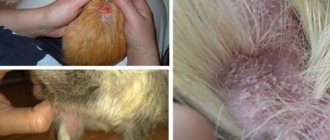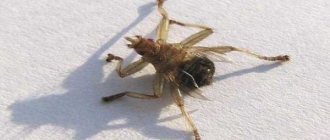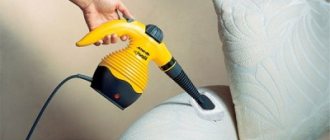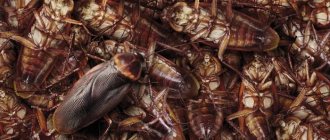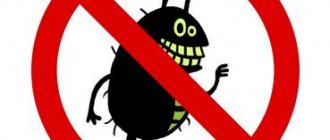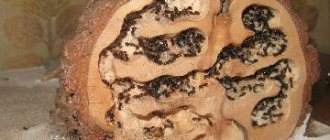External parasites are fairly easy to prevent. Keeping the cage spotlessly clean and regularly disinfecting is key to preventing parasites. Keep in mind that despite following strict cleaning procedures, external parasites can still be introduced by a new rat you bring home, or commercial rodent litter, bedding, or any other item that has come into contact with an infested rat.
Mites are the most common external parasite found in pet rats. Lice and fleas are less common. One of the main symptoms is itching. However, keep in mind that allergies to food, litter, and other environmental factors can also cause itching. If your rats have external parasites, get rid of them quickly as they can cause illness and internal parasites.
Fleas appeared. How to solve a problem?
The flea is a blood-sucking insect and belongs to the order of arthropods. The length of its body is only 1-5 mm. They have strong and long limbs, thanks to which they move. The life cycle ranges from several months to 2-3 years, and can go without food for a long time. A mature female lays eggs, then larvae emerge from them, which are small white worms. After 1-1.5 weeks, the larvae turn into pupae, and then adult insects emerge.
Reasons for appearance.
2. Cluttered room.
3. Carrying things, food, building materials, etc. into the apartment.
4. Infestation of basements with rodents.
5. Migration of fleas from public corridors, entrances, and from neighbors.
Arthropods can be carriers of infectious diseases such as hepatitis, tuberculosis, typhoid, plague, malaria and other infections, and their bite causes pain, irritation, itching and redness of the skin.
The priority areas for flea infestation are carpets, bedspreads, linen drawers, upholstered furniture, resting areas for pets, under baseboards, window sills and wallpaper, and other secluded places, grooves and crevices.
Types of fleas.
Cat and dog fleas.
Fleas that live on cats and dogs live in the animal's fur, but often bite people too. Dog and cat flea bites are dangerous because they get on the fur from rodents or other infested animals. They multiply very quickly. Fleas are eliminated from the animal by treating it with special shampoos, sprays, and drops on the fur. Don’t forget to treat your pets’ resting areas.
Ground or basement fleas.
Earth fleas can enter residential areas mainly during warm periods through windows and doors. Warm air temperatures, lack of ventilation and light, high humidity and dampness, dirt and dust contribute to their rapid reproduction. Cluttering the basements of apartment buildings, as well as the infestation of rodents and stray animals, is guaranteed to contribute to the appearance of fleas.
You can get rid of fleas in your apartment yourself using special insect repellents, provided that the cause of their infestation is eliminated. Thus, if you have fleas that you brought from the basement or entrance of an apartment building, then exterminating insects in the apartment will be advisable when carrying out a set of measures in all occupied premises. Unresolved causes of the appearance of arthropods (clutter, infestation by rodents and stray animals, high humidity and dampness) directly affect the quality of flea treatments and the duration of action of insect repellent preparations.
Algorithm of actions when carrying out flea treatments.
To remove insects, you can use any aerosol insecticide, dusts and prepared solutions of insecticide concentrates.
The most important thing before use is to put on a gauze bandage or cover your nose and mouth with a handkerchief to prevent the substance from entering the respiratory tract and causing poisoning.
1. cleaning the premises
2. applying special preparations to kill arthropods, according to the instructions, including in all hard-to-reach places.
3. ventilate the room, it is recommended to wash off the product where contact with hands is possible.
After treatment, it is advisable not to wash floors and baseboards for 4-5 days. The fleas die within 24 hours, but the insects will not immediately leave you alone, which is a normal process: eggs will hatch within 1-2 weeks. Once on the treated surface, they will die within 1-2 days. If after 2 weeks the situation has not improved, it is recommended to repeat the treatment.
The Federal Budgetary Institution of Health "Center for Hygiene and Epidemiology in the Republic of Mordovia" offers to order special treatment at home. Our list of services also includes the treatment of basements and attics using the effective “hot fog” method. Our specialists will competently select a method for exterminating insects and a preparation for you.
More detailed information regarding the implementation of insect extermination activities can be obtained from the specialists of the Federal Budgetary Institution "Center for Hygiene and Epidemiology in the Republic of Mordovia"
in person (Saransk, Dalnyaya str., 1A,
by phone +7 8342 333 175, +7 8342 333 615
Source
Rat ticks
If your rats are constantly itching or have crusty skin, they likely have mites. An exception may occur if you have a rat that is stressed, sick, or elderly. An animal may show symptoms of ticks even if it does not bother other animals in the cage. In this case, your older rat may have a weakened immune system, making him more susceptible to mites.
Here are the different types of mites your pet can get:
- Rat fur mite (Radfordia ensifera)
Mites that appear on fur are most often found on rats. They are usually present in small quantities without causing problems. Mites as the cause of your pet rat's itching are actually very difficult to diagnose. Your veterinarian may perform a skin scraping test and examine the samples under a microscope. However, these tests do not always detect mites even if they are present. Some veterinarians choose not to perform these tests and instead go straight to treatment to rule out the presence of mites.
- Ear mites (Notoedres muris)
Ear mites are much less common than fur mites. The presence of these mites can be detected by crusts on the ears, nose, tail and feet. These mites burrow into the skin, are microscopic in size, and (like fur mites) live only on rats.
- Tropical rat mites (Ornithonyssus bacoti)
The least common type of mite found on pet rats, the tropical rat mite can bite humans and other animals, as well as rats. Filled with blood, they are visible to the human eye. Their color is usually dark red, brown or black. Tropical rat mites live in cracks around the cage.
The best treatment for ticks is a topical medication prescribed by your veterinarian. Even if the skin scraping and tests are negative, your veterinarian may still prescribe Ivermectin or Mitaban. These medications will not cause harm even if your rat does not appear to have mites. In fact, using these remedies can help determine whether mites are actually causing your rat's itching. An alternative treatment for ear mites is the use of petroleum jelly.
Do rats have fleas?
If rat fleas get into the house, their first target is domestic rodents - decorative rats, hamsters, guinea pigs. A pet can die from a parasite attack. If there are no such animals, fleas feed on the blood of cats, dogs, birds, and humans.
The main place of their localization is bedding and houses for pets, old carpets. They do not live on the body of their owner, but only attack to feed.
Risk areas for flea infestation are garbage chutes, basements, places where garbage and waste accumulate. Insects cling to clothes, shoes, bags, and animal fur while walking.
Indoors, they immediately find places to hide and reproduce:
- joints of window frames and door frames with the wall;
- space behind the baseboards;
- wood floor cracks;
- upholstery of upholstered furniture;
- trash bin storage location.
If there is an old carpet that has not been washed for a long time, there is a risk that it will become a place for a large accumulation of fleas. Sometimes they hide in stacked bedding and towels. They can get inside the pillow if they find a hole.
Preventive measures
Rat fleas thrive in places where there is accumulation of dust and dry debris; therefore, regular cleaning of residential premises is required to prevent them from entering your home.
Particular attention should be paid to bedspreads, upholstered furniture, carpets, and bedding, on which pets often rest. In a private home, it is also recommended to clean basements and cellars
In the same situations, if you have to be in places where attacks by rat fleas and ticks are possible, it is necessary to use insecticidal insect repellents. The most common and effective are aerosol preparations based on the insecticide DEET, which repels both fleas and ticks.
In addition, to protect yourself from fleas and ticks when going outdoors, it is recommended to wear long pants and try to avoid spending long periods of time near animal bedding areas and rodent burrows. During business trips or travel, it is better to avoid staying in cheap lodging houses and hotels, which are usually infested with various parasites.
Ways to combat parasites
The most effective way to rid your home of fleas is to call a professional. They will carry out comprehensive treatment of the premises using professional means. Exterminators can be ordered from the sanitary and epidemiological station or a private insect control company.
To prevent re-infection, it is necessary to poison the parasites from your neighbors, since getting rid of rat fleas in one apartment is not enough. They easily move around the entrance and penetrate through doorways and cracks.
It is also necessary to carry out preventive measures in basements and attics.
An important stage in the fight against insects is the treatment of all domestic animals, replacing their bedding with new ones.
Drugs
Aerosols are a popular remedy - they can be used to remove rat fleas from an apartment, as well as treat animal fur with special compounds.
Medicines for pets are purchased at a pet store, and for general treatment of the premises, sprays from hardware stores and supermarkets are suitable: Raid, Kombat, Raptor, Medilis Cyper, Karbofos.
Insect killing dusts are effective against flea larvae. Among the well-known drugs are “Fas”, “Pyrethrum”, “Clean House”.
How to prepare a house for processing
Before starting to destroy parasites, some preparatory measures are carried out:
- To prevent their reappearance, pets are given anti-parasitic collars and open cracks leading to the basement or attic are sealed.
- Do a very thorough cleaning of the entire house to eliminate dust, dirt and other conditions favorable to fleas.
- Carpets are beaten, washed or vacuumed very well.
- Bed linen and clothes are washed in hot water, then treated with a very hot iron.
- Blankets, bedspreads, pillows, mattresses, soft toys, blankets are washed if possible or at least hung outside to freeze or dry (depending on the time of year).
- Protect your household from flea bites by using special means - DEET aerosols, turning on fumigators. Wormwood helps well, which can be placed near the bed to repel parasites while sleeping.
Appearance
These insects are divided into varieties; the most common type of flea is the southern rat flea.
With the naked eye it is impossible to distinguish them from other relatives - dogs, cats and domestic ones. Only a specialist can determine the species under a microscope.
The rat flea looks similar to other representatives of the genus: the body has an elongated shape, flattened on the sides, the back part is raised due to long jumping limbs.
It is covered with chitinous cover and has a dark brown color. Length – from 3 to 5 mm.
Symptoms of infection
Flea bites cannot be ignored - when the proboscis is inserted under the skin, they do not inject any anesthetic enzymes, like other blood-sucking insects.
In addition, the wounds are very visible externally - the parasites cause irritation on the skin, which is accompanied by itching, swelling, and redness. Most often, it is bites on a person that reveal their presence in the house.
If a rat has fleas, scratching marks, bald spots and scabs will be noticeable on its body. The pet will jump sharply from time to time, reacting in a similar way to painful bites.
Other pets exhibit the same symptoms as when infected with other types of fleas - nervousness, constant scratching of the skin, especially in hard-to-reach places.
What is the danger to humans?
The rat flea can be a carrier of a dangerous disease. If such an insect bites a person, an infection enters the body along with the saliva. In the worst case scenario, it will turn out to be a plague bacillus - the causative agent of the plague.
Other possible diseases include:
- hepatitis (its different forms);
- AIDS;
- typhoid fever;
- encephalitis;
- salmonellosis;
- brucellosis;
- anthrax.
Like house fleas, rat fleas leave behind many unpleasant symptoms, some of which require special treatment and can be dangerous.
Consequences of a bite
After a rat flea bite, wounds remain on the skin, which bring physical and mental suffering to a person.
Most common symptoms:
- redness and swelling of the skin;
- burning, severe itching;
- elevated temperature;
- vomiting, diarrhea;
- difficulty breathing, feeling of chest tightness;
- headache (in the back of the head).
Sometimes sleep disturbances, weakness, and decreased performance occur. In case of severe allergic manifestations, the help of a doctor and specific treatment are necessary.
Source
Human bloodsuckers
According to their main characteristics, human parasites are not much different from other species - they cannot fly, they are jumping, they feed on blood. To find out what bed fleas look like, it’s enough to know what dog or human fleas look like. The human flea has a laterally flattened body of brown or black-brown color. There are various hooks and bristles on the body and limbs. Lives for about 1.5 years, the female manages to lay up to 500 eggs. The hungry parasite jumps onto the head and makes a bite in the skin under the hair. The person experiences acute pain, but it is impossible to catch and crush the parasite. The bite can cause allergies, headaches, and fever. How to deal with this condition can only be found out after consulting a doctor. You should not scratch the bites - the consequence can be multiple painful small wounds. There are no special shampoos or soaps. Outside your home, you can repel parasites using repellent sprays. Pest control in an apartment is a complex and urgent undertaking, since the colony of parasites multiplies daily. If the insects came from the basement, then before deciding how to get rid of basement fleas, you need to rid the apartment of them. You need to start getting rid of parasites with cleaning. First, use a vacuum cleaner to clean all carpets and furniture. After the procedure, thoroughly clean and disinfect the dust collector. Next is wet cleaning of the entire room. It is better to remove the inhabitants of the apartment along with pets from the apartment during treatment. Without neglecting protective measures - gloves and a respirator - treat all surfaces with a preparation such as Dichlorvos or another equally effective product
It is important not to miss any possible shelter - behind baseboards, under furniture, behind carpets. Maintain the treated apartment with closed windows and doors for two hours
Then ventilate and do not clean for the next two days. Cellar fleas must be destroyed in the same way. It is important not to forget about the need to destroy all clutches of eggs.
Where do parasites come from in decorative rats?
Rat breeders often ask this question when they discover parasitic animals in their pet. The unpleasant sight and torment of the rodent force the owner to look for all possible ways to destroy these parasites. Even with careful care, the animal becomes infected, and the sources can be:
- fillers _ Hay and sawdust are habitats for lice eaters and ticks. If a person buys litter in dubious places and at too low a price, then there is a possibility of these parasites appearing in the house;
- contact with infected animals . Other pets that are infested with fleas or lice act as a dangerous source for the rat;
- external environment . The owner brings various infections from the street on his hands and clothes.
The precautions are as follows. Buy fillers only from trusted pet stores and carry out preventive maintenance regularly. Wash your hands and take off dirty clothes immediately after coming home.
Prevention
Both external and internal parasites cause a lot of anxiety and trouble for the pet and its owner. In addition, parasitic diseases that are not treated promptly can lead to serious complications for the animal’s health. Therefore, it is better to pay attention to the prevention of all types of parasites. The following measures will help avoid infection:
- Regular cleaning of the cage . You need to wash the tray and change the filler at least 3 times a week. And once a month it is necessary to completely disinfect the cage and everything in it.
- Buying quality filler . Insects are almost never found in products from trusted manufacturers. Additionally, to avoid troubles, it is necessary to store the filler in sealed bags. If this is not possible, it is better to buy filler in small packages that are quickly used up.
- Sending newly acquired rats to quarantine . It is advisable to place purchased animals in a separate cage for the first 2-3 weeks. This time is enough to check your pet for parasites and, if necessary, treat it.
- Fencing a decorative rat from other domestic animals . First of all, from strangers. This applies to those who like to receive guests with their pets.
- Compliance with personal hygiene rules . You should not touch your fluffy immediately after being outside, especially in public places. First you need to change clothes and wash your hands thoroughly with soap. And only after that, start communicating with pets.
- Feeding with quality products . Industrial food for decorative rats usually does not pose any danger. However, during long-term storage, insects may appear in the bag. But natural nutrition can become a potential source of danger. Therefore, before serving to the rat, it is necessary to thoroughly wash fruits and vegetables, and heat treat meat and fish.
Rat fleas in the apartment: routes of entry and hiding places
Externally, to the naked eye, rat fleas are practically indistinguishable from the parasitic fleas of cats and dogs. Only under a microscope can one see the main differences of this species. Below is a photo of a rat flea at high magnification:
Actually, rat fleas are not just one species, but a whole genus of species of parasitic insects, the main hosts of which are rodents. Of these, the southern rat flea, a notorious carrier of the plague pathogen, parasitizes common gray rats and some other species of rodents.
By the way, fleas in rats do not necessarily belong specifically to the genus of rat fleas. They can also be parasitized by human, rabbit, dog, cat fleas and many other species.
Rat fleas look the same as most of their relatives: their small body, about 3 mm long, is flattened laterally and has a dark brown color. Fleas do not have wings, but their hind legs are much longer than the two pairs of front ones. Thanks to them, insects make simply huge jumps for their size: this little one can fly up to 30 cm after one push.
Rat fleas are temporary parasites of all their hosts. They do not live on the body permanently, but only jump on the animal in order to bite it and drink blood.
At the same time, the insects themselves are very attached to the resting places of their owner, so as to always have a source of food nearby. As a rule, insects settle in the nesting litter in the burrows of rats, gophers, gerbils, and marmots, and lay their eggs here.
Preventing Infection
Prevention is the best way to combat the spread of plague.
- It is extremely important to reduce rodent habitats. This involves removing debris, clutter, wood piles and other possible sources of rat food from around the house.
- Rat fleas are common in garden areas, walking areas, and trekking areas. Many products, such as DEET, permethrin, are safe for use on pets and people. All label precautions must be followed when using these products.
- It is important to avoid rat fleas in pets. Infected animals should be promptly treated with a veterinarian-recommended product.
- Pets that roam outdoors are more likely to be infested with rat fleas. At the first signs of illness, seek medical help immediately. It is also important that pets do not sleep on your bed, especially when they live in endemic areas.
How to recognize the presence of parasites in a rat?
Ticks
It is impossible to recognize a tick on an animal with the naked eye. A scraping done by a veterinarian does not always show the true result. There are indirect signs: hair falls out, red wounds appear on the body. Ear mites are immediately visible . The owner observes tubercles along the edge of the ear. If you don't treat your pet, the ears will soon become corroded.
Important! You should regularly inspect the body and ears of a decorative rat. Trim the claws in a timely manner, otherwise the animal will cause serious injury to its delicate skin.
Treat the pet yourself or contact a veterinarian. In the first case, the following drugs will help:
- Stronghold drops. The composition is dripped onto the withers. Dosage - 0.01 ml per 100 g of rat weight. After the first application, significant improvements are observed;
- drops Lawyer. The substance is dripped onto the withers, the dosage is identical to the previous drug;
- Dironet Spot-on drops. Used when the animal is heavily infected;
- drops on the withers Parasiticide complex. One drop is enough to rid a rat of subcutaneous mites.
Attention! It is better to contact a veterinarian or ratologist. The specialist will recommend a drug that will help a specific breed of decorative rat.
Shampoos and brushing will not help get rid of ticks. Experts advise regularly changing the filler, cleaning and disinfecting the cage.
lice eaters
These are small red insects, with a body size of 1 mm. It is difficult to recognize lice eaters, but their eggs are noticeable. They resemble dandruff that has stuck to the fur. Symptoms: The rat is anxious, refuses to eat, behaves nervously and quickly loses weight.
Important! The parasitism of lice eaters is dangerous - the rat may die. Treatment should be started as quickly as possible, and at the first symptoms, immediately consult a veterinarian.
Washing or combing out infected fur will not help the animal. Based on reviews from rat breeders, the best drug for lice eaters is Neostomazan . This is an emulsion in glass or plastic ampoules of 2 ml.
The remaining solution is used to treat the cage and other accessories. Gradually, the pet will shed, and non-living lice eaters and larvae will fall off along with the fur.
These are dangerous insects with an elongated flat body. Parasites feed on blood. The decorative rat is constantly bothered by itching. Adults cannot be seen due to their too small size. Only eggs are recognized.
Symptoms: the animal is nervous, actively scratches its body, and does not react to others. Anemia, typhus and hemobartonellosis often develop.
Lice are destroyed by Stronghold, Frontline or Neostomazan. The remains of the drug are treated with the cage and accessories. Shampoos and combing will not help. It is recommended to exclude the use of sawdust as bedding and filler.
Basic medications for ticks, lice and helminths and methods of their use
The first drug is Neostomazan. Here are some tips for use:
- to treat one pet you will need 1/2 of the emulsion diluted in 200 ml of warm water;
- cover the rat with the composition using a cotton pad;
- wrap in a towel for 5 minutes;
- Wipe the animal dry and dry it with a hairdryer.
An effective and inexpensive drug gets rid of any parasites.
Attention! A decorative rat should not lick itself during the procedure. Otherwise, the product will lead to poisoning.
The second drug is Bars. Choose in the form of an aerosol, without containing permethrin. Fiproline should act as an active substance. The bottle is pointed at the rodent and pressed once. Repeat the procedure after 10 days to completely destroy the parasites.
The third drug is Parasiticide-complex. Used on the withers. If the rat is dewormed, the remedy is administered orally. Other substances are used in the absence of basic drugs.
Fleas
The most ancient and unpleasant parasites that suck the blood of the victim. Appear in the house from cats, dogs, wild rodents. After laying eggs, the animal is additionally exposed to larval bites.
Symptoms include anxiety in the pet. He scratches the skin, and the itchy spots turn into scabs. Anemia may develop.
Treatment of a decorative rat for fleas consists of:
- in the wash with a special shampoo for kittens . For example, Bars, Celandine. Apply the product to damp fur and leave for 10 minutes. Then the shampoo is carefully washed off and the pet is dried. Repeat the procedure after 2 weeks;
- in the use of drops on the withers - Frontline, Neostomazan. One drop is enough to kill all fleas. Repeat after 3 weeks;
- combing with a fine comb. It is better to carry out the procedure on wet fur. Collect adult specimens in a container with a tight lid and then dispose of them.
Treat the cage with a disinfectant. Change the bedding. Check other pets for parasites.
Have you found fleas on your pet?
Bedbugs
They live in every corner of the house: under baseboards, on linen, in carpets and so on. Causes severe itching in decorative rats. Bedbugs attack your pet when there is not enough food or there is no person nearby. They are considered the most dangerous insects that can cause blood poisoning.
Important! These parasites are not noticeable. Only a veterinarian can help determine the exact cause of the animal’s anxiety. The owner does not know which parasite attacked the pet.
It is not recommended to delay treatment of a decorative rat. Negligence will lead to a more difficult fight against bedbugs, and in the worst case, the death of the rodent.
Medicines to get rid of parasites
All medications used must be prescribed by your veterinarian. If your veterinarian has not examined your rats in the last month or so, an examination is an important first step to making a diagnosis and prescribing the proper medications. Finally, it is safer to purchase all medications from your veterinarian rather than online or at a human pharmacy.
Your veterinarian will likely prescribe Ivermectin to help get rid of parasites. This medication should be administered topically or orally. Injectable Ivermectin can also be used topically by placing the appropriate dose on the rat's neck and allowing the rat to lick itself. Then the animal will be able to swallow the product.
Do not use the medicine on infants or pregnant or lactating females without the prior approval of a veterinarian.
The product can be used once every 10–14 days, for a total of three procedures. During storage, Ivermectin for injection should be kept away from direct light.
All pets should be treated, even if some are asymptomatic. Some rats itch and others don't, but that doesn't mean they don't need to be treated. In addition to treating your rats, you will need to thoroughly clean the cage (1 part bleach to 10 parts water is recommended), throw away all trash, wash all fabric materials in the cage, and get rid of any wooden toys that are not sealed. If you have unused bedding or litter, you should freeze the bag for up to 24 hours before using it to kill any lice or mites that may be living in it.
You should notice fewer scratches and scabs on your pet's body within 2-3 days of the first treatment. Water often helps soothe a rat's skin. Trimming your rat's nails can also help the scabs heal faster.
What is the danger of these pests to humans?
Rat fleas are extremely harmful to humans, as well as to animals. Their bites are very painful and have unpleasant consequences. Externally, the bite site is clearly visible; a red spot appears there, it is very itchy and slightly swollen. In sensitive people, a rat flea bite can cause an allergic reaction, including swelling of the upper respiratory tract and anaphylactic shock. Often these pests appear in homes where various rodents live as pets - rats, mice, gerbils, hamsters. People usually notice the presence of insects in the house when their pet's behavior changes, it often itches and appears restless, or if they themselves become a victim of these pests.
Just like other types of these parasites, the rat flea can cause pulicosis in humans . This is a common dermatological disease caused exclusively by flea bites.
Symptoms of bites may be as follows:
- Swelling at the site of the bite;
- Itching;
- Increased body temperature up to 40 °C;
- Skin rashes;
- Diarrhea;
- Headaches and nervous system disorders;
- Ulcers in the mouth and throat.
Treatment options
When identifying traces of insect bites, you need to properly treat the affected area:
- Wash skin thoroughly with warm water and soap.
- Treat the bite area with an antiseptic.
Suitable for this:
- hydrogen peroxide;
- iodine;
- brilliant green;
- miramistin;
- alcohol lotion, etc.
If signs of an allergic reaction appear, you should take an antihistamine. If your body temperature rises and your lymph nodes become enlarged, consult a doctor.
How to prevent parasites from appearing in a rat?
The best treatment for a decorative rat against all kinds of parasites will be timely prevention. Insects cause discomfort, and drugs are toxic and dangerous for the animal, no matter what the advertising says.
Here are some rules:
- keep the cage clean, regularly change the water in the drinking bowl;
- feed your pet correctly;
- ventilate the room;
- buy filler only in a specialized store;
- wash your hands and change clothes before interacting with an animal.
Pay more attention to the behavior of the decorative rat. The first signs of dangerous parasites often turn into serious illnesses for your pet.
Attention! It is strictly prohibited to purchase fillers and food for rodents in online stores. Often the owner of a decorative rat was sold products of the worst quality. You should take care of your pet and trust only trusted stores.
Tips for Preventing External Parasites
- Take your rats for regular checkups at least once every six months.
- If you are using pre-packaged litter, freeze the contents of the bag before using.
- Freeze the food, and only then defrost it and feed it to the rats. This should be done if you think the contents of the package may have been exposed to vermin.
- Keep your rat cage clean and disinfected regularly.
- Quarantine all new rats. Three weeks is a good time to protect existing rats from external parasites.
- After handling any animals outside your home, wash well and change clothes before handling your own rats.
- Keep wild animals, especially wild mice and rats, out of your home.
Methods of controlling parasites
Getting rid of rat fleas indoors is not difficult, but it is troublesome. Adult insects die when surfaces are treated with aerosol insecticides such as Raptor or Combat; in addition to this method, larvae can be destroyed with special means - dusts and microencapsulated preparations such as Get, which are used against cockroaches and ants.
It is also useful to read: How long do fleas live without an animal and can they live on humans?
The most effective method of combating rat fleas is to call special pest control services. Employees of such companies use very powerful professional insecticides in their work, one treatment of an apartment with which is enough to completely destroy all parasites.
It is not difficult to remove fleas from a rat or other domestic rodent: for this you can use flea remedies for kittens or puppies - sprays, drops on the withers, shampoos. It is only important to select the right concentration so as not to exceed the permissible limit for an animal of a certain weight.
How to get rid of fleas and prevent them from appearing
The following remedies are used to prevent flea infestation:
- Drops on the withers - the active substances are absorbed into the blood through the skin, paralyze and kill insects when they bite.
- Collars – depending on the spectrum of action, they repel or kill parasites.
- Sprays - have a local and short-term, but high-quality effect.
- Shampoos - serve as a primary treatment to reduce the number or temporarily eliminate fleas.
- Folk remedies - the use of plants and household products to repel parasites.
In addition to processing the animal, it is necessary to comply with hygiene standards. By regularly combing the fur with a fine comb, you will find parasites at an early stage of infection. Cleaning and treating the dog's resting place will prevent the proliferation of insects brought from a walk.
Note! Prevention and treatment of an animal are not omnipotent - control your pet’s contacts with stray animals. .
Prevention of infection of decorative rats with parasites
In addition to the basic rules, owners of decorative rats should closely monitor other pets. If a cat or dog prefers to spend a lot of time outside, then they are thoroughly washed after a walk.
Attention! For better prevention, rat breeders observe a two-week quarantine for newly acquired rats. The animals are kept in another cage, shown to a doctor, and treated with drugs.
Keep the house clean. The main cause of the appearance of bedbugs, ticks, and lice is the person himself. Some owners call specialists every month to sanitize their premises.
If a rat breeder keeps several individuals, then each rat is processed. Otherwise, pests will be able to attack your pet’s clean coat again. The bedding is changed once a week. Wooden utensils are thrown away: they can become a breeding ground for parasites.
Dream Interpretation, Rats
Seeing rats in a dream means the appearance of secret enemies that are not so easy to get rid of. Huge, impudent rats running around the house in reality foreshadow family troubles and insincerity of friends, business discord and losses. If in a dream you set a trap for rats, it means that in reality you will become aware of the intentions of your enemies. A rat caught in a trap foreshadows a robbery of an apartment or a scandal with neighbors. Kill a rat - get rid of slander and rivalry. A dead rat means a contagious disease. To drive rats out of the room, wielding a poker or something of the like, is a struggle with varying success and disastrous results. If you are afraid of rats in a dream, in reality you will end up in an unpleasant situation and be falsely accused. To grab a rat with your hands - you will experience disgust for a low, vile person. Seeing a cat catching a rat means you will receive life-saving support in time. If a cat eats a rat before your eyes, you will witness an unpleasant family scene in the house of your friends.
Appearance
These insects are divided into varieties; the most common type of flea is the southern rat flea.
With the naked eye it is impossible to distinguish them from other relatives - dogs, cats and domestic ones. Only a specialist can determine the species under a microscope.
The rat flea looks similar to other representatives of the genus: the body has an elongated shape, flattened on the sides, the back part is raised due to long jumping limbs.
It is covered with chitinous cover and has a dark brown color. Length – from 3 to 5 mm.
Features of life
Adult rat fleas recognize their only food as blood. Their victims can be not only mice, rats and other rodents, but also cats, dogs, and even humans. Unlike many blood-sucking parasites, an anesthetic substance is not injected during the bite, since in case of danger they are able to leave the food object in a split second. The duration of a rat flea meal varies from 2 to 20 minutes.
Contrary to popular belief, this type of parasitic fauna does not spend its entire life on the body of the “host”, but also does not settle too far from it. Rat fleas in an apartment or house hide in secluded places and animal bedding.
Reproduction can occur both on the food source and outside it. Every day the female lays from 5 to 12 eggs. The qualities of a hen are not inherent to her and she can squeeze embryos out of herself while moving.
Who bit the dog
Of the hundreds of species of fleas, parasites with a “narrow specialization” live in populated areas and cities. Each species has a primary host, but can temporarily reside and bite any animal or person. Common types include:
- Cat fleas are the most numerous and universal species; they parasitize any mammals, while displacing fleas of other species.
- Dog fleas are the second most numerous species. Lives on dogs, bites people, less often cats.
- Human fleas are the largest representatives; they live in human homes and bite domestic animals.
- Rat fleas are a dangerous species and are carriers of epidemiological viruses.
- Bird fleas are the smallest species; they live mainly on birds, but can bite animals and people.
It is impossible to protect yourself from the “attack”; the parasites hide in the grass, damp rooms and jump at lightning speed on any approaching “victim”. They stick to clothes and shoes without difficulty and can remain hungry for up to 2 months without harm to health.
Note! Damp, warm places, such as basements and underground passages, are the optimal breeding ground for fleas. The second most popular source is carrion; the dog instinctively rolls around in the rotting remains of fish or poultry, thereby collecting the “waiting for” parasites.
Features of the species and habitat
The highest concentrations of rat fleas are observed in tropical and subtropical regions, but some individuals successfully migrate throughout the world. The insect easily adapts to difficult conditions and can do without food for a long time.
The appearance of the parasite is not much different from other representatives of the order - dog or cat fleas. The body of an adult does not exceed 4 mm in length. The insect moves using 6 legs, two of which are jumping. The oval-shaped body is flattened, which, together with a durable chitinous shell, protects the flea from physical damage.
For reference! The optimal microclimate for the successful development of the parasite is a temperature of about +25⁰C with a humidity level of 60 to 75%. In one clutch, a female can have up to 400 eggs, which contributes to the rapid reproduction of the pest.
Source
Parasite behavior
Appearance of a flea
Not everyone knows what fleas look like. People who do not have animals in their homes usually have very general ideas about these insects. A person may not know whether fleas have wings. He, unlike a zoologist, is not interested in the question of the number of legs a flea has. But this does not mean that he will never encounter this phenomenon in his life. Parasites can be accidentally brought home from stray dogs and cats from the street. Infection is possible while relaxing in the forest or on the beach.
Fleas are found in all seasons of the year. Both males and females feed on blood. They live in the nests of birds, squirrels, in the burrows of gophers, hamsters, jerboas and other small animals, and are distributed throughout the world. The main hosts are mammals. Representatives of fleas have been found even in Antarctica. But against the general background, the colony of insects that bite humans is not so numerous.
The feeding process can last from one minute, if the parasite is disturbed, to several hours. Some species require multiple meals, others are rarely saturated, but in excess, without even having time to digest the incoming blood. There are insects that leave the owner after their meal, but there are also those that remain in the animal’s fur until the next attack of hunger.
On the Internet you can find any information about what kind of fleas there are, where they live, and the characteristics of this type of blood-sucking insect. In real life, they are difficult to see without special devices, so you can see the fleas in the photo in a greatly enlarged form.
Fleas
